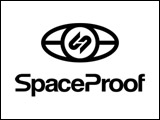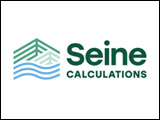Archaeologists tell us that agriculture, the nurturing of plants so they can be harvested and consumed, probably began about 10,000 years ago. Prior to that our ancestors depended on hunting and gathering. When agriculture began, the inputs going into food production were labour, and sometimes, depending on the sophistication of the system, manure fertilizer and irrigation water.
Even as recently as 100 years ago almost all of the inputs going into food production came from the farm. Horses, by then had become the main source of power on farms, but these horses were bred and multiplied on the farm, and the feed the horses consumed came from the farm. The farming system was solar powered, low-input, and low-emission.
But in 1918 small tractors appeared on the scene, and soon replaced horses. These tractors do not replicate on the farm. They are built in factories using fossil energy, and whenever they do any work, they consume gasoline and diesel. All of that input comes from off the farm.
30 years later, during and after WWII, we discovered what could be done with nitrogen fertilizer – urea based fertilizer, all derived from natural gas. Since its introduction 70 years ago, the use of petroleum derived nitrogen fertilizer has increased steadily. In 2016 Manitoba farmers used twice as much nitrogen fertilizer as they did in 1989. Today this fertilizer is the most significant input in conventional food production. And remember, it takes twice as much energy to make a tonne of nitrogenous fertilizer as it takes to make a tonne of gasoline.
These days we have all become concerned about Greenhouse Gases (GHG). Climate scientists tell us that in the 1950s, CO2 in the atmosphere was at 300 ppm. Today it is over 400 ppm. The Manitoba government, in its recently issued Climate and Green Plan estimated that 32% of the GHG produced in Manitoba comes from agriculture – from our food system.
What it boils down to is that for 10,000 years, we humans have depended on a Low-Cost, Low-Input, Low-Emission food system. It is only in the last 100 years that we have become dependant on a High Cost, High-Input, High Emission food system. But note: it is not agriculture, it is not the growing of food that produces GHG. That is photosynthesis. It is the inputs into agriculture that produce the GHG. It is not sustainable. We need to find ways of producing our food without the dependence on inputs. And ironically, we know how to do that because we have been doing it for 10,000 years.
Darrin Qualman has quantified our dependence on inputs in our food system. He says that in 1918, farmers kept almost all of the revenue from food sales. In the 1970s, 56% of that revenue went into paying for inputs, and today, Qualman says, 96% of farm revenue goes to pay for inputs. For the sake of our planet, for the sake of future generations, this needs to change.
Although some may see this as an agricultural challenge, I view this more broadly as a food systems challenge. The farmer, the food producer, will decide which productions system he uses. However the consumer, the food purchaser, will decide whom she purchases her food from. Regular readers of this column know that there are alternatives to the conventional for both farmers and food purchasers.



